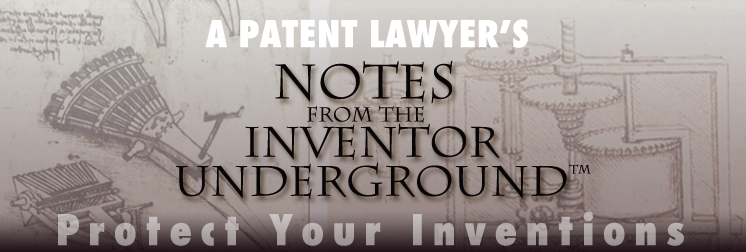Notes from the Inventor Underground

Know Your Inventors And Name Them — Or Lose Your Patent
Patent and Technology trial lawyer Stan Gibson discusses the importance of disclosing all of the inventors on a patent application and making sure that only the correct inventors are listed.
When multiple inventors contribute to the conception and reduction to practice of an invention, determining the appropriate inventors to list on a patent application (and ultimately the patent) can be complicated. It is also critical. Indeed, the failure to name all co-inventors can make the patent unenforceable, particularly if one or more of the named inventors intended to deceive the patent office. In addition, listing people who are not inventors as inventors can have the same dire consequences — the inability to enforce the patent. The recent case of Advanced Magnetic Closures, Inc. v. Rome Fasteners Corp., 607 F.3d 817 (Fed. Cir. 2010) illustrates what can happen when an inventor misleads the patent office on the issue of who invented the invention covered by the patent.
In Advanced Magnetic, the defendant argued that the patent it was accused of infringing was not enforceable because the patent did not name a co-inventor (and actually the only true inventor) of the patent. The defendant argued that a co-inventor of the patent was left off the patent because the co-inventor’s employer would have held the rights to the patent and not the purported patent holder. The district court, finding that the co-inventor should have been named on the patent application, granted a judgment as a matter of law, finding that the patent was unenforceable due to inequitable conduct, i.e., that one of the named inventors on the patent had intended to deceive the patent office by not listing the correct inventor on the patent.
The Federal Circuit affirmed the district court. Quoting from previous decisions that "[O]ne bad apple spoils the entire barrel," the Federal Circuit held that the patent was unenforceable due to inequitable conduct. The Federal Circuit found that if a true co-inventor is concealed from the patent office, the named inventor has affirmatively mislead the patent office and is guilty of inequitable conduct. As a result, the patent becomes unenforceable–even by the innocent co-inventor. The Federal Circuit concluded that a patentee who fails to disclose a co-inventor’s identity withholds material information as inventorship is material to obtaining a patent. In addition, the Federal Circuit found there was intent to deceive when a co-inventor deliberately hides the identity of another co-inventor. As a result, the finding of inequitable conduct was affirmed and the Federal Circuit noted that "if district courts do not abuse their discretion in holding patents unenforceable when true inventors deliberately exclude co-inventors, a district court can, a fortiori, exercise its discretion to hold a patent unenforceable when a person falsely swears that he invented before the PTO." Id. at 832.
This ruling demonstrates the importance of disclosing all of the inventors on a patent application and making sure that the correct inventors are listed. It is extremely important to make sure that not only are the correct inventors identified, but also that only the true inventors are listed and that other individuals are not listed if they did not contribute to the invention. If, during the prosecution process, the patentee learns that an inventor is not listed, the application should be amended at the earliest opportunity to make sure that all true inventors are properly identified. If there are people who claim to be inventors, it is therefore important to thoroughly investigate their claims of inventorship and evaluate whether they are true inventors. If they are not, then it should be documented why they are not true inventors so that later charges of inequitable conduct can be defeated. If they are true inventors, then the patent application or patent should be amended to add them as co-inventors. Otherwise, the consequences are severe–the patent will not be enforceable.
To view a representative list of Stan’s patent and technology cases, click here.
 Los Angeles Real Estate Litigation Lawyer Jeffer Mangels Butler & Mitchell LLP Home
Los Angeles Real Estate Litigation Lawyer Jeffer Mangels Butler & Mitchell LLP Home





